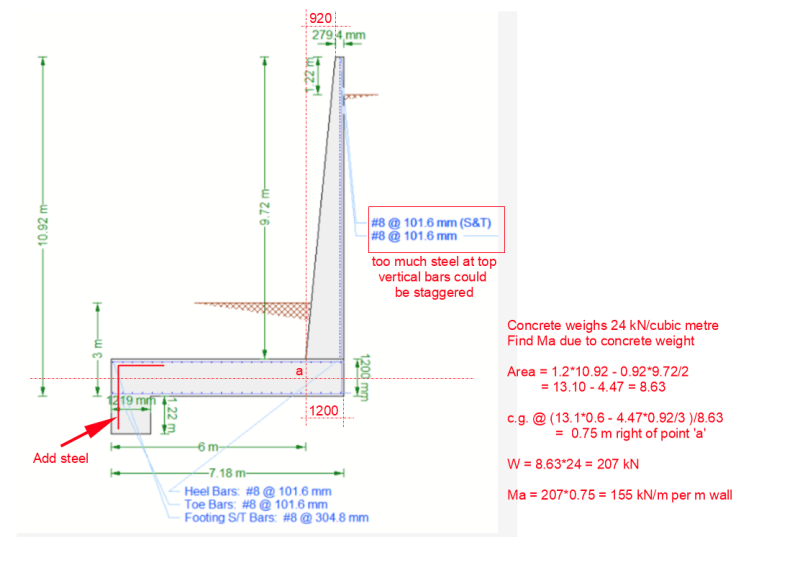Can't recall ever designing a retaining wall with no toe or no heel. They are both corner details. With no toe, the right angle is tending to open, but diagonal bars can be added at the re-entrant angle. With no heel, the angle is trying to close with no possibility of adding a diagonal bar.
One way to look at it is by using the strut and tie model. I have never used it on an actual project, so I probably should keep quiet, but I believe it could be an effective tool for solving this type of problem.
My current feeling is that in the absence of either toe or heel, the vertical tension bars in the wall and the horizontal tension bars in the footing should terminate at the junction with a mechanical anchor, but I'd be interested to hear what others think on the subject.
EDIT: If the footing has a key (turned down portion) to create more passive pressure and if the key is located such that the vertical wall bars can be fully developed, mechanical anchorage would not be necessary for the wall, but would be for the footing.
BA

